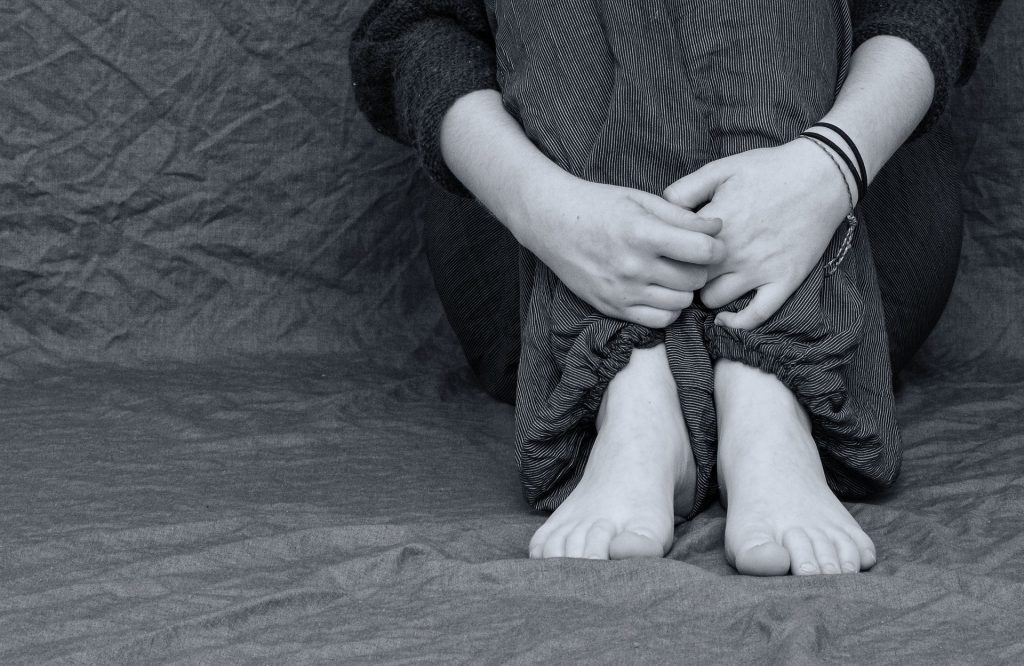
You may be wondering why someone would be cutting, burning, hitting themselves, and picking their skin if you’ve never done it before yourself. What do they get out of it? Just like when people turn to alcohol, drugs, compulsive spending, overeating, and risky sex to cope with their problems, some people self-harm.
Self-harm is a quick way to deal with overwhelming emotions and stress. If you grew up in an invalidating environment where you were told to “suck it up,” you may have learned to sweep your problems and feelings under the rug. The issue with the “Get Over It and Grow Up” mentality is that it can push people to turn towards unhealthy coping mechanisms to manage anxiety and depression. As paradoxical as it sounds, self-harm can produce a soothing effect for someone under stress. If self-harm repeatedly makes a person feel better in the moment, it’s understandable why it would become a habit to ground themselves.
[Read Related: The Rise of The Battle of Alcohol Addiction Amongst U.K. South Asian Women]
There are, unfortunately, many misconceptions about self-harmers, even among mental health professionals and loved ones. Some people assume that all self-harmers must have a borderline personality disorder, but it’s possible to be a self-harmer without a personality disorder.
Some people assume that only teenage girls self-harm, but men and adults of all ages do it as well.
Some people assume that self-harmers want attention, but many self-harmers keep their behavior a secret.
Some people assume that self-harm is the equivalent of a suicide attempt, but many self-harmers aren’t trying to kill themselves at the moment.
It would be helpful if professionals and loved ones realize that a self-harmer can be anyone – even a high-functioning person who looks like they have it all together. There is no singular type of person who self-harms.
What should you do when you or someone you know is self-harming?
Dialectical behavior therapy has been shown to decrease self-harming behaviors. Ask a potential therapist what their level of expertise is in treating self-harm. A competent therapist can help you find alternative ways to deal with what’s triggering you. Common coping skills can range from putting ice on your skin, peeling the skin off oranges, running your hands under cold water, having a cup of tea, journaling, playing an instrument, and more. The key is to replace your self-harming habit with what’s healthy for you, as well as finding out what emotions you’re covering up with self-harm (like guilt or feeling helpless).
[Read Related: Challenging the Stigma of Suicide and Mental Health in the Face of Tragedy]
Having a good support system is also important because it helps to connect with people outside of your therapy sessions. Someone may see self-harming as their only outlet because they feel like their social circle doesn’t understand them. Finding trustworthy and supportive people to talk to can distract you from your dangerous urges.
If you find out that someone important in your life is self-harming, try to stay calm. A self-harmer is opening up to you because they want your help on how to stop. Scolding and yelling at them isn’t helpful because it leads a self-harmer to feel more ashamed and withdrawn. The feelings of being misunderstood and alone are among the many reasons why some South Asians self-harm.
Just because someone is struggling with self-harm at some point in their lives doesn’t mean that they will be struggling forever. Self-harm may give immediate relief at the moment, but it doesn’t solve what’s really bothering you. People can overcome and stop self-harming behavior.
Helpful Resources:
1-800-DONT-CUT
1-800-334-HELP




